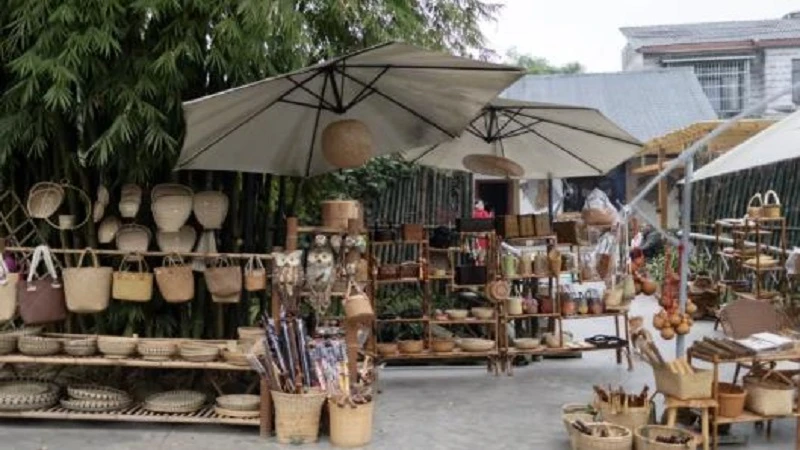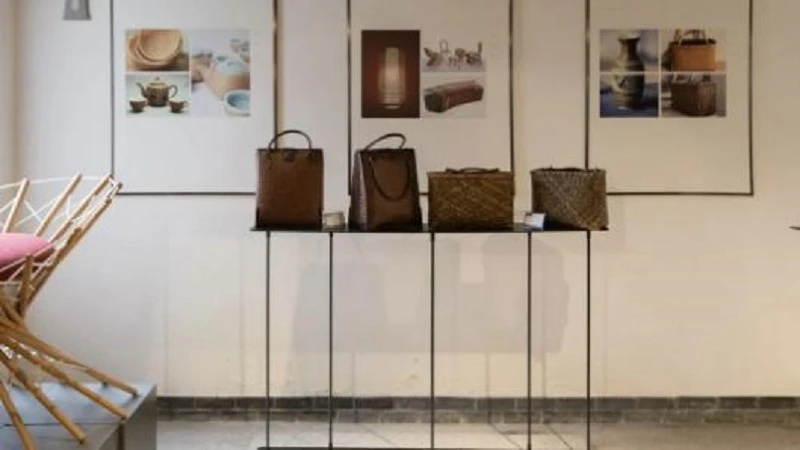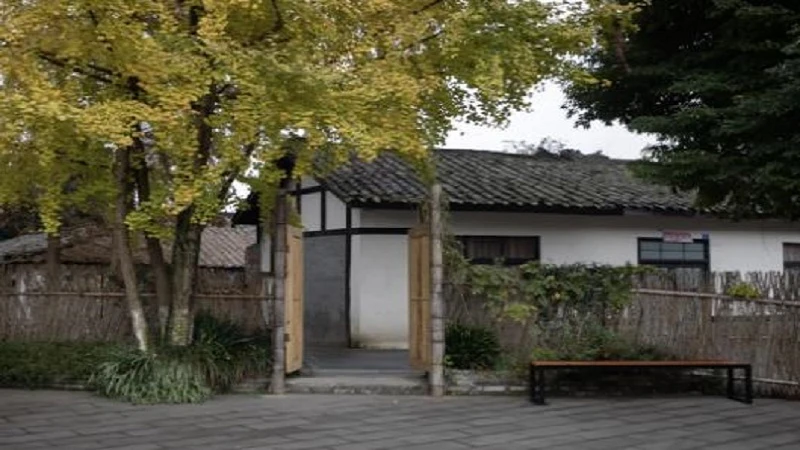Nestled amidst the serene bamboo groves and traditional white-walled, blue-tiled houses of the Sichuan countryside lies Daoming (道明) Bamboo Art Village. A mere four years ago, this village, located in Longhuang Village, Daoming Town, Chongzhou, was just one of many ordinary rural settlements in western Sichuan. Today, however, it has transformed into a vibrant cultural hub known far beyond China's borders. Not only does it showcase its rich bamboo weaving heritage, but it has also made a name for itself internationally, representing Chinese rural beauty at events like the Venice Biennale.
This transformation is a perfect example of the success of Chengdu's rural revitalization initiative, reflecting a broader vision of creating beautiful, livable, and ecologically balanced spaces. The success of Daoming Bamboo Art Village demonstrates how an underdeveloped rural area can reinvent itself while preserving its cultural roots.

The Struggles of a Forgotten Village
Before its transformation, Longhuang Village was like many other traditional villages in China—charming but underdeveloped. It was home to a few elderly residents and women, while most of the younger generation had left in search of better opportunities in urban areas. The village's main source of income was bamboo weaving, a craft with roots tracing back to the Qing Dynasty. Yet, despite its cultural significance, bamboo weaving in Daoming had little exposure outside the region, and those who remained in the village earned meager wages from their craftsmanship.
Daoming's bamboo weaving is a national intangible cultural heritage, but its promotion was limited. The village had natural beauty, including a nearby tourist route and the breathtaking Wugen Mountain, but these resources were underutilized. Realizing the untapped potential, the local government and Chongzhou Cultural and Tourism Group began planning an ambitious project to reinvigorate the village. Their vision was clear: to merge agriculture, commerce, culture, and tourism, and bring Daoming's bamboo weaving to the world.
In late 2016, the key turning point came with the creation of the "Zhuli" (Bamboo Studio), a unique cultural exchange space. This architectural masterpiece, designed to blend into the natural landscape, became a symbol of the village's rebirth. Zhuli not only gave local artisans a platform to showcase their work but also attracted tourists, art enthusiasts, and even international attention.
A New Era for Bamboo Weaving and Tourism
By 2018, the transformation of Daoming Bamboo Art Village was in full swing. The first change was in the village's infrastructure—new roads, clean water systems, and public facilities brought immediate improvements to the quality of life for residents. The bamboo weaving industry also underwent a major upgrade. What was once a local craft limited to household items like baskets and mats expanded into new realms. Bamboo was now being used in architecture, home decor, fashion accessories, and even outdoor installations.
The village's growth didn't stop at infrastructure and industry. It also began attracting a wave of returnees—young people who had previously left for city jobs. These new residents saw an opportunity to blend tradition with modern business ideas. One such example is Yang Longmei, a young woman who, after working in the aviation and real estate industries, returned to her roots in Daoming to continue her family's three-generation bamboo weaving tradition. Her fresh perspective and passion for innovation helped reimagine bamboo products, turning them into modern, stylish pieces like bamboo lamps, chairs, and vases that appealed to contemporary consumers.
Tourism also flourished in the village. A new wave of businesses opened up, including cafes, inns, and art galleries, many of them housed in renovated traditional Sichuan-style homes. Among these new establishments was the "Sanjing Academy," founded by Ma Si (马嘶), a young poet and writer. Ma's decision to open the academy in Daoming was a testament to the village's cultural renaissance, as he sought to preserve the aesthetics and traditional charm of Sichuan's rural architecture while offering a retreat for art and literature lovers.
Today, the village's landscape is a harmonious blend of traditional bamboo groves, charming white-walled houses, vibrant bamboo art installations, and crystal-clear mountain springs. The influx of tourists and the growth of local businesses have given the once-sleepy village a new lease on life, showcasing the best of rural Sichuan and offering visitors a glimpse of a thriving, modern village.
Sustaining the Transformation: Bamboo as the Future
For Daoming Bamboo Art Village, the focus is not just on attracting tourists but also on creating sustainable growth through its bamboo weaving industry. Two key goals of rural revitalization are to boost industry and retain the population, and Daoming is succeeding in both areas. The village now hosts a range of cultural and recreational activities, from workshops on traditional bamboo crafts to exhibitions of contemporary bamboo art. Local businesses continue to grow, offering visitors a variety of experiences, from trying their hand at bamboo weaving to enjoying the local cuisine.
To ensure the long-term success of the bamboo weaving industry, the local government founded the Sichuan Daoming Bamboo Art Industry Development Company. This company streamlines production, manages orders, and handles marketing and sales, helping local artisans reach wider markets and grow their businesses. The goal is to turn Daoming bamboo weaving into a well-known national brand, synonymous with quality and craftsmanship.
The future of Daoming Bamboo Art Village looks bright, with plans to further integrate tourism and industry. One upcoming project is the Wugen Mountain Bamboo Art Park, which will span over two square kilometers and feature educational and recreational areas dedicated to bamboo. Visitors will be able to explore bamboo-themed science exhibits, participate in bamboo craft workshops, and enjoy the park's scenic trails.
A new bamboo art studio is also in the works, aimed at attracting artists, designers, and students from around the world to collaborate on bamboo-related projects. This studio will serve as a hub for innovation, ensuring that Daoming Bamboo Art Village remains at the forefront of bamboo art and design while staying true to its cultural roots.



